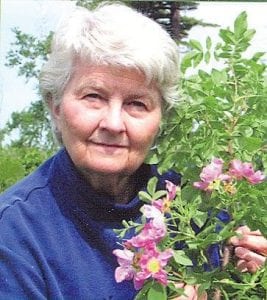At first glance, Wildflowers of the Boundary Waters – Hiking Through the Seasons by Betty Vos Hemstad, a Gunflint Trail summer resident, is a lovely coffee table book. However, a closer inspection, particularly with a flower question, proves the book to be an invaluable resource.
The book includes colorful photographic shots of each of Vos Hemstad’s 120 featured flowers in the field. The facing page includes closer looks— lovely portraits of familiar flowers such as bunchberry and prickly wild rose buds or the more exotic slender ladies’ tresses or round-leaved orchid. The book also includes alien-looking shots of plants or seedpods such as the marsh marigold, wild calla, or fragrant water lily.
Vos Hemstad shares a brief reflection on each wildflower, ranging from scientifically interesting tidbits to fond remembrances of where she encountered the plant. This reviewer’s favorite text accompanies the lovely yellow evening primrose, a Ralph Waldo Emerson quote, “A weed is a plant whose virtues have not yet been discovered.” Throughout the book, weeds are celebrated—and discoveries encouraged.
It is those discoveries that make Wildflowers of the Boundary Waters more than a colorful coffee table book. In a very short time, the book answered a number of questions for my family.
A granddaughter picked a pretty yellow flower and asked, “What kind is this?” Thanks to Wildflowers, we learn that the ubiquitous yellow weed is bird’s-foot trefoil.
A hike with a friend led to debate—is that orange flower devil’s paintbrush or orange hawkweed? Thanks to Wildflowers, we discover it is known by both names.
A rainy afternoon drive with relatives from Indiana led to an unusual sighting—a delicate white flower resembling a morning glory, growing very close to the ground. Flipping through Wildflowers, the answer is found—an upright bindweed. Why have I never seen it? Because its blossoms do not last long, and once closed, it never opens again.
Another hike and another delightful discovery—a strange looking pitcher plant. Would we have spotted the carnivorous wildflower if we hadn’t just seen it in the book? I’m not sure. But it’s a wonderful reason to return to the book again and again.
Make your own discoveries with Wildflowers of the Boundary Waters, available at local bookstores or from Minnesota Historical Press at www.mhspress.org. Visit with Vos Hemstad at book signings at Chik-Wauk Museum from 12 noon – 2:00 p.m. on August 31 and September 12.




Loading Comments